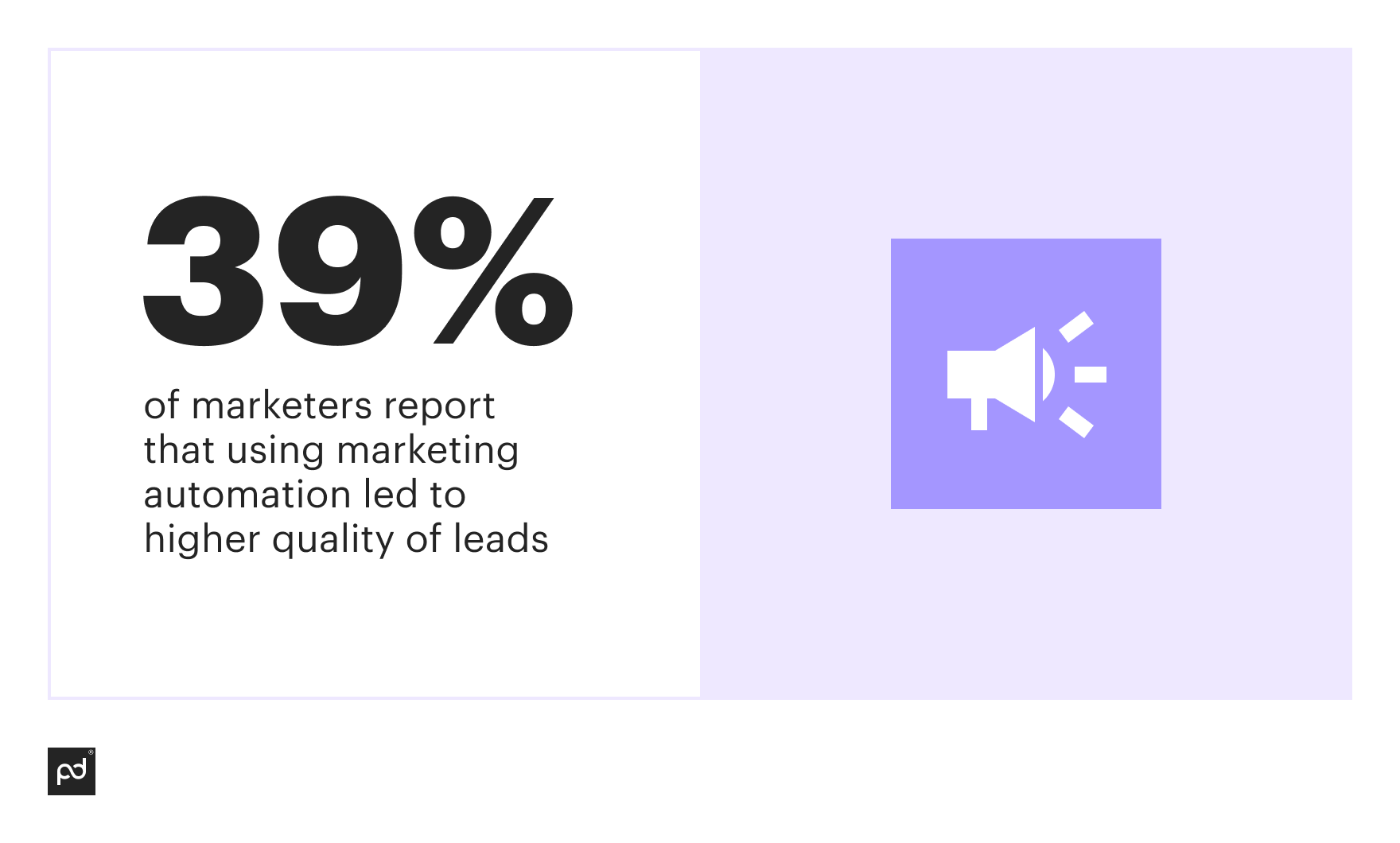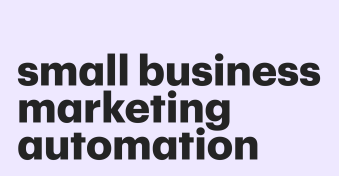Feeling swamped with documents to sign? Need more customer data? Want better conversions?
Read on to learn how marketing automation tools can help solve all of these problems.
Key takeaways
- Marketing automation tools accelerate productivity, help generate more leads, increase conversion rates, and provide useful data.
- Automation apps can be integrated with each other for additional, synergistic benefits.
- Other benefits include decreased overhead, streamlined paperwork and a calmer working environment.
1. Productivity
One of the most often mentioned benefits of marketing automation is streamlining repetitive tasks and gaining more efficiency as a result.
Companies who use it see on average a reduction in marketing overhead.
The reduced costs come from less time spent on processing documents, organizing reports, monitoring the sales funnel, etc.
As an added benefit, speeding things up also makes the job easier for the sales teams, increasing their close rates by 36%.
2. Better lead generation
Thanks to more efficient prospecting and nurturing, you can gain up to 43% more sales qualified leads.
First, because of marketing automation apps, you can learn more about your prospects than you would otherwise.
The relevant data points can help you plan your marketing campaign more precisely and optimize the costs while doing so.
Having it all organized and presented in an easy-to-understand way will make it easier for you to complete reports for the higher-ups.
The second part of it is lead nurturing. The “rule of seven” states that you need to contact the customer (or at least get noticed by them) at least seven times before they will buy from you.
This is especially meaningful for the B2B sector with long sales cycles and complex products.
Keeping in touch with prospects in a consistent but non-intrusive manner will make them think about you when they realize they need whatever your company is selling.
Imagine running Salesforce integrated with PandaDoc. The CRM will keep the customer information and notify you when it’s time to take an action.
3. Higher conversion rate
About 39% of marketers report that using marketing automation led to higher quality of leads.

This can be attributed to a robust lead scoring system that stays consistent across the entire company.
Understanding what makes somebody a good lead and accurately gauging every incoming request helps the sales team approach them and convert more.
The second part of it is personalization.
Different businesses have different pain points, budget, goals, and processes.
Even if your product fits pretty much any company (e.g. if it’s an e-signature solution), there are still different personas.
And there are individual decision-makers with their own peculiarities and quirks.
With the right tools you’ll be able to keep that information on hand and optimize your messaging to fit each company and executive you have among your leads and prospects.
And this personal attention is what differentiates fast-growing companies from average ones.
4. Alignment with the sales teams
Marketing and sales are supposed to work hand-in-hand to draw interested people in and turn them into customers.
Automation tools facilitate this cooperation by uniting all the steps of the B2B pipeline.
Smooth cooperation between marketing and sales teams results in better performance, which comes from sharing information and documents.
The data in the CRM can be viewed by employees in both sales and marketing, the presentations and offers can be created collaboratively, and the data for scoring can be gathered by everyone involved.
Moreover, if any issues arise, the transparent systems in place will help find them without placing the blame on whoever is out of favor at the moment.
5. Easier monitoring of campaigns
Tracking the results of mailing campaigns, A/B testing, paid marketing on social media and search engines, as well as other activities can be overwhelming.
However, with automation tools in place, you can run and monitor all of them with little effort.
You can easily access all the information: expenditures, conversion rate, lead scores, website visits, and more.
And with inbuilt reporting tools you can quickly arrange this data to show the results to your superiors.
6. Less time spent on paperwork
Reports, agreements, and other administrative work takes a lot of time and effort.
Doubly so if these documents need to be made in collaboration with someone else.
Not only is it boring, this work doesn’t directly contribute to what actually matters — bringing in qualified leads. With the right document management system, you can cut the time spent on paperwork by 50% or even more.
First, these platforms tend to have templates that you only need to populate with information.
All the boilerplate text is already there, making document generation a breeze.
Second, they have inbuilt workflows. This means any document subject to approval will automatically go through all steps of the process — you only need to initiate it.
Third, document management systems often include e-signature capabilities.
This means you don’t have to mail documents to your customers or contractors — they can sign the documents remotely and it will have the same legal validity as an autograph they left with a pen on a printed version.
Finally, such software integrates with other systems.
This means you don’t have to manually attach a signed contract to someone’s CRM entry — the system will handle it for you.
7. Reduced burnout
According to research, nearly 76% of marketers experience burnout in some form.
Between high expectations, repetitive tasks, creative walls, and overload it is no wonder people dread their jobs. However, marketing automation can alleviate it in several ways:
- Demonstrate results. Sleek-looking reports with reliable data that highlights your achievements go a long way toward reestablishing confidence.
- Making work fun again. While the apps are busy with paperwork and other boring aspects, you can focus on what’s enjoyable: marketing strategy, creative work, and customer research.
- No miscommunication. When everyone is on the same page, the likelihood of people getting into arguments drastically decreases. This means you have fewer stress factors.
Besides the obvious human costs, burnout could lead to missed deadlines, shrinking productivity, increased absenteeism, and other things that directly harm the company’s bottom line.
So addressing it should be at the top of any executive’s to-do list.
Your options for implementing PandaDoc
1. Do it yourself. If you are a self-starter and prefer to do everything at your own pace, this is the best option for you. Get access to our Learning Academy for free and find out how to use all the PandaDoc features in the way that works best for you.
2. Get a demo. If you want expert advice on implementing PandaDoc solutions, schedule a demo. This will save you time on getting acquainted with the system.
3. Sign up. People who prefer taking matters into their own hands can go ahead and sign up for a free trial. It lasts for 14 days, so you’ll be able to check out all the features and see how they impact your business.
Disclaimer
PandaDoc is not a law firm, or a substitute for an attorney or law firm. This page is not intended to and does not provide legal advice. Should you have legal questions on the validity of e-signatures or digital signatures and the enforceability thereof, please consult with an attorney or law firm. Use of PandaDocs services are governed by our Terms of Use and Privacy Policy.


